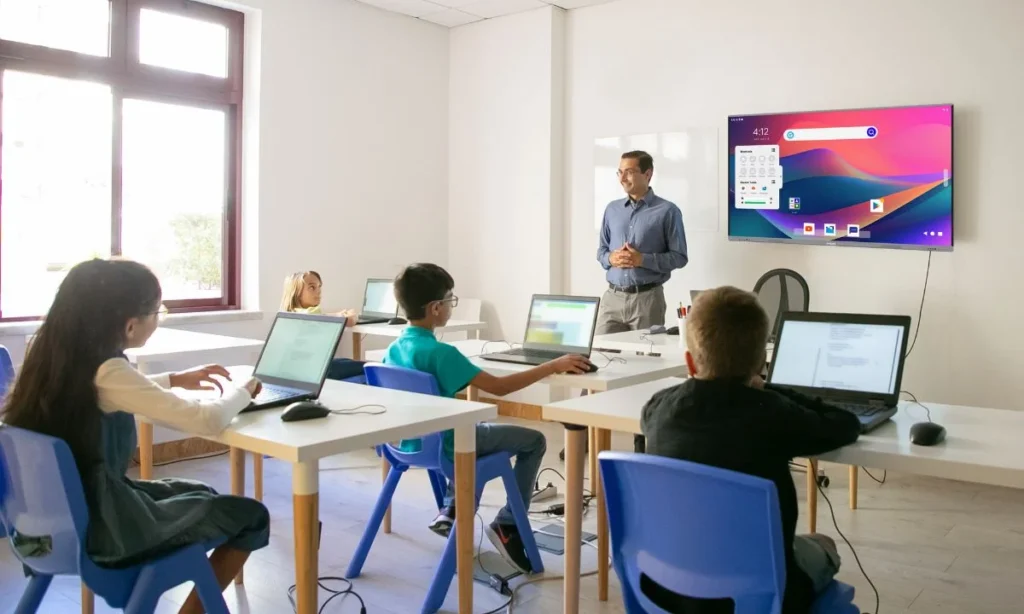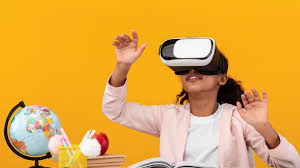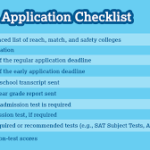The traditional classroom is experiencing a groundbreaking evolution, transforming into a tech-infused, interactive hub known as the “smart classroom.” Fueled by digital learning platforms, education is becoming more customized, engaging, and accessible than ever. These platforms are reshaping how students absorb knowledge, how teachers deliver instruction, and how schools operate. At we’re thrilled to delve into the latest innovations in digital learning that are paving the way for the future of education.
What Makes a Smart Classroom?

A smart classroom harnesses advanced technology to create a vibrant and efficient learning ecosystem. It merges digital tools, interactive content, and data-driven insights to elevate the educational experience. From AI-guided tutoring to virtual lessons, smart classrooms are reimagining what it means to learn in the modern era.
Key Innovations in Digital Learning Platforms
1. Artificial Intelligence (AI) and Tailored Learning
AI is at the forefront of educational innovation, enabling personalized learning experiences. Digital platforms leverage AI to:
– Assess student performance and pinpoint areas needing improvement.
– Deliver lessons customized to individual learning preferences.
– Offer instant feedback to accelerate student progress.
Platforms like Knewton and DreamBox are pioneering adaptive learning, ensuring every student’s path is unique.
2. Gamification: Learning Through Play
Gamification is transforming education into an interactive and enjoyable experience by incorporating game-like elements such as points, badges, and leaderboards. This approach enhances motivation and engagement. Examples include:
– Duolingo: Using gamification to make language learning captivating.
– Kahoot: Turning quizzes into lively, competitive games.
This trend not only boosts participation but also fosters teamwork and healthy competition.
3. Microlearning: Compact, Focused Lessons
In today’s fast-paced world, learners often lack time for extensive courses. Microlearning addresses this by breaking content into concise, easily digestible modules. Key features include:
– Short videos, quizzes, and infographics that can be completed in minutes.
– Platforms like Blinkist and Quizlet offering quick, on-the-go learning solutions.
This trend is ideal for busy students and professionals seeking flexible learning options.
4. Immersive Learning with VR and AR

Virtual Reality (VR) and Augmented Reality (AR) are elevating education by creating immersive, interactive experiences. These technologies simplify complex concepts and make learning more captivating. Examples include:
– Medical students practicing surgeries in virtual environments.
– History students exploring ancient civilizations through AR-enhanced lessons.
Platforms like Google Expeditions and zSpace are leading this cutting-edge trend.
5. Collaborative Learning Tools
Digital platforms are enhancing collaboration by enabling seamless interaction between students and educators. Tools like:
– Microsoft Teams and Google Classroom for group projects and discussions.
– Miro for virtual brainstorming and idea-sharing.
This trend helps students cultivate teamwork and communication skills, essential for success in today’s collaborative workplaces.
6. Data-Driven Insights for Educators
Digital platforms are equipping teachers with data analytics to refine their teaching strategies. These tools enable educators to:
– Identify areas where students require additional support.
– Monitor progress and adapt lesson plans to meet student needs.
Platforms like Schoology and Canvas are at the forefront of this trend, enhancing both teaching and learning outcomes.
7. Mobile-First Learning Solutions
With the ubiquity of smartphones, digital learning platforms are prioritizing mobile accessibility. Features include:
– Intuitive mobile apps and interfaces.
– Offline access to course materials for uninterrupted learning.
This trend reflects the growing preference for flexible, on-the-go education.
8. Emphasis on Mental Health and Well-Being
Recognizing the importance of mental health, digital platforms are integrating features to support learners’ emotional well-being. Examples include:
– Meditation and mindfulness exercises on platforms like Headspace.
– Tools to help students manage stress and maintain a healthy work-life balance.
This holistic approach ensures that education nurtures both academic and emotional growth.
The Future of Smart Classrooms
The future of smart classrooms is teeming with exciting possibilities:
– AI-Powered Virtual Tutors: Providing personalized, real-time assistance to students.
– Blockchain-Based Credentialing: Offering secure and verifiable certifications.
-Global Learning Networks: Connecting students and educators worldwide for collaborative learning.
Final Reflections
The smart classroom is redefining education, making it more personalized, engaging, and accessible. Digital learning platforms are at the core of this transformation, offering innovative solutions that cater to the diverse needs of learners we’re committed to helping students, parents, and educators navigate this exciting new era of education.
By embracing these trends, we can create a future where learning knows no boundaries and every student has the tools and opportunities to thrive.











